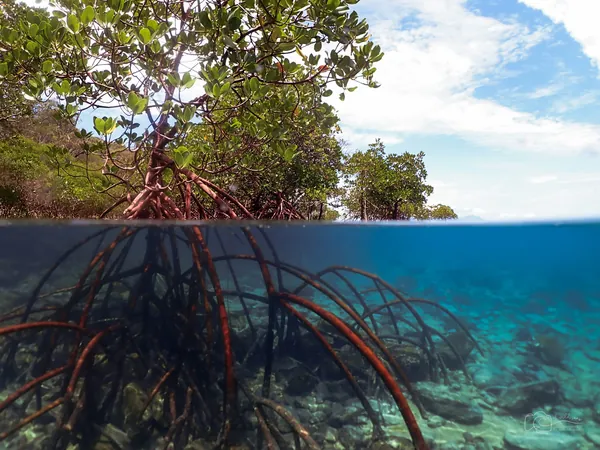
Alarming Mangrove Degradation in China’s Pearl Bay Endangers Vital Carbon Storage
2024-11-04
Author: William
Introduction
China’s Pearl Bay, known for its rich biodiversity and ecological significance, is facing a catastrophic threat as the mangrove forests integral to carbon storage fall victim to degradation. These coastal ecosystems, which act as crucial carbon sinks, draw down atmospheric carbon dioxide and play a critical role in combating climate change.
Importance of Mangroves
Mangroves are particularly important in tropical and subtropical intertidal zones, where they store substantial amounts of organic carbon in both marine and terrestrial environments. However, their capacity to sequester carbon is increasingly compromised by a combination of natural challenges and human-induced activities, all of which are intensified by climate change. Factors such as coastal erosion, land subsidence, rising sea levels, elevated temperatures, and increased salinity due to drought conditions and tidal impacts are threatening these vital ecosystems.
Research Findings
Recent research published in Frontiers in Marine Science by scientists Chuanyi Guo and Dr. Loh Pei Sun from Zhejiang University sheds light on the severity of this crisis. Their comprehensive study of the mangrove reserve in Pearl Bay reveals shocking statistics: the area’s mangrove trees, including species such as Aegiceras corniculatum, Bruguiera gymnorhiza, Avicennia marina, and Kandelia obovate, have an average age of 50 years and store only 144.5 Mg of organic carbon per hectare. This number is alarmingly lower than both the national and global averages.
Sediment Analysis
By examining sediment cores dated between 1963 and 2020, the researchers uncovered significant changes in various factors affecting mangrove health. Notably, the sedimentation rates decreased from approximately 80 mm per year between 1977 and 1980 to just 17 mm per year from 1980 to 2021. The composition of sediments also shifted; whereas finer sediment fractions containing organic carbon once dominated, coarser sands have become more prevalent, capturing less organic matter.
Declining Soil Quality
Additionally, there has been a concerning decrease in the ratio of total organic carbon to total nitrogen, which indicates deteriorating soil quality. The study found that soil organic carbon levels dropped from 2.57 Mg to 1.97 Mg per hectare per year before and after 2001, respectively. Moreover, stable carbon isotope ratios indicated a concerning trend of decreasing organic contributions from mangroves, replaced increasingly by inputs from riverine and marine sources.
Human Impact
Human activities further exacerbate this situation. Increases in wastewater discharge and the conversion of mangrove land for shrimp farming are directly linked to the degradation observed. The researchers observed that the combined effects of sea-level rise and human interference have led to diminished organic matter, which risks turning these ecosystems from precious carbon sinks into sources, releasing stored carbon back into the atmosphere.
Conclusion
Despite covering only a tiny fraction of Earth's land surface (0.1%), mangrove forests are essential for biodiversity and climate resilience. Protecting these vital regions is imperative not only for their ecological benefits but also for their role in mitigating climate change. Sustainable management practices must be implemented urgently to halt the further loss of organic matter and preserve what remains of carbon stored in these unique ecosystems.
As the world grapples with climate change, the fate of Pearl Bay’s mangroves serves as a critical reminder of the global necessity to safeguard these habitats for future generations. If unchecked, the decline of these forests may contribute significantly to increased atmospheric carbon levels, threatening not only local ecosystems but also the planet's health as a whole.









 Brasil (PT)
Brasil (PT)
 Canada (EN)
Canada (EN)
 Chile (ES)
Chile (ES)
 España (ES)
España (ES)
 France (FR)
France (FR)
 Hong Kong (EN)
Hong Kong (EN)
 Italia (IT)
Italia (IT)
 日本 (JA)
日本 (JA)
 Magyarország (HU)
Magyarország (HU)
 Norge (NO)
Norge (NO)
 Polska (PL)
Polska (PL)
 Schweiz (DE)
Schweiz (DE)
 Singapore (EN)
Singapore (EN)
 Sverige (SV)
Sverige (SV)
 Suomi (FI)
Suomi (FI)
 Türkiye (TR)
Türkiye (TR)